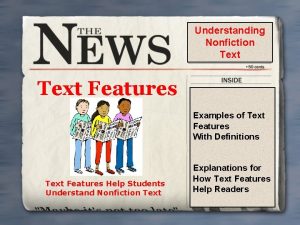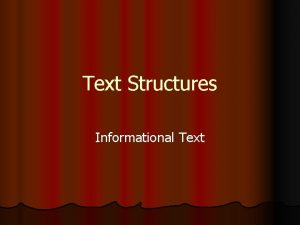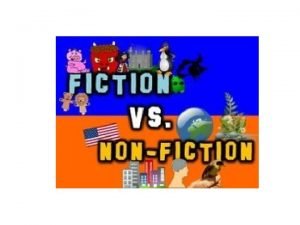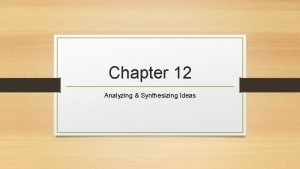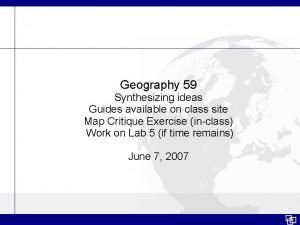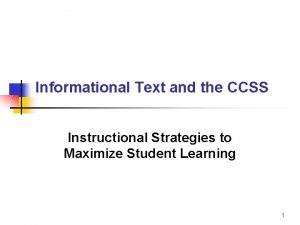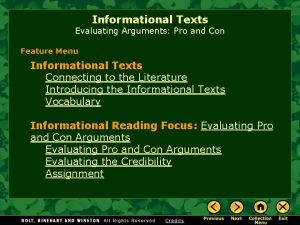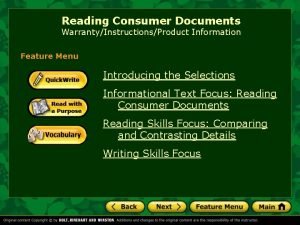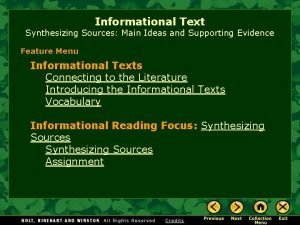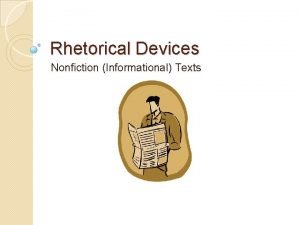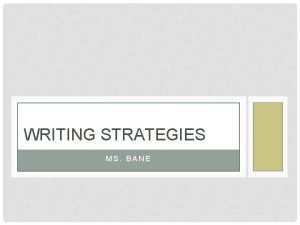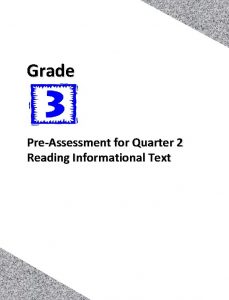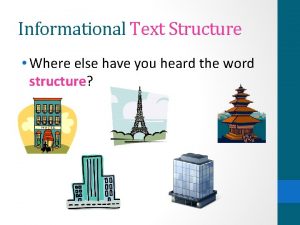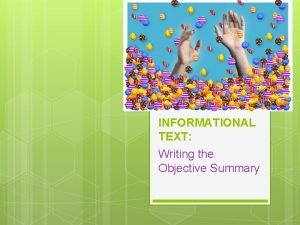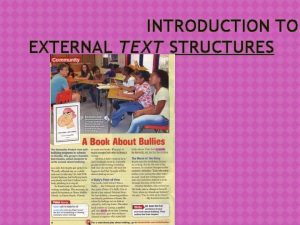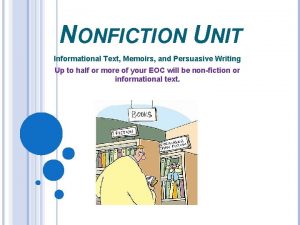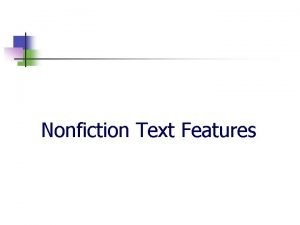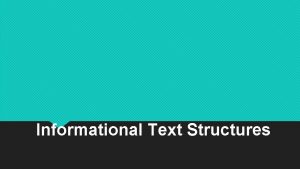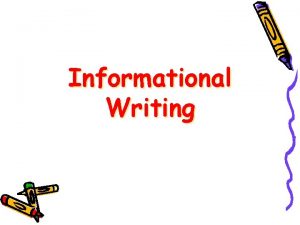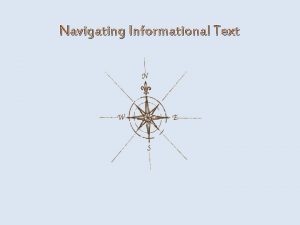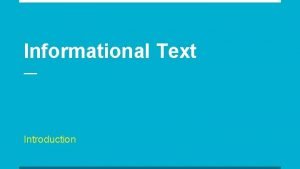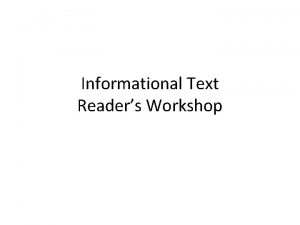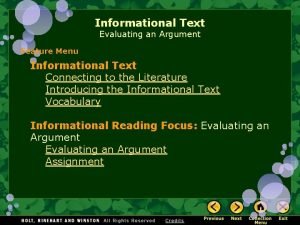Text Structures Informational Text What are text structures


















- Slides: 18

Text Structures Informational Text

What are text structures? l Text structures are organizational patterns for informational texts. l Authors use certain text structures to help their audience better understand the information presented.

What are the types of informational text structures? The most common are: l CAUSE AND EFFECT l COMPARE/CONTRAST l PROBLEM AND SOLUTION l SEQUENCE/CHRONOLOGICAL ORDER l DESCRIPTION

CAUSE AND EFFECT Definition l. Author presents facts or ideas as causes and the resulting effects

CAUSE AND EFFECT signal words/phrases l Effect l As a result l Because l Consequently l For this reason l If…then l Since l Therefore

COMPARE/CONTRAST Definition l Compares and contrasts specific elements of two or more things; how are they alike and different

COMPARE/CONTRAST signal words/phrases l Alike l As opposed to l Different l In common l On the other hand l Similar

PROBLEM AND SOLUTION Definition l Describes a problem and its solution(s)

PROBLEM AND SOLUTION signal words/phrases l Affect l As a result l Because l Consequently l For this reason l If…then l Since l therefore

SEQUENCE/ CHRONOLOGICAL ORDER Definition l Author lists events in chronological order based on time

SEQUENCE/CHRONOLOGICAL ORDER signal words/phrases l First l Next l Last l Then l After l Before l Later

DESCRIPTION Definition l Author describes a topic by listing characteristics, facts, attributes or examples

DESCRIPTION signal words/phrases l for example l characteristics l for instance l such as l is like l including l to illustrate

TEXT STRUCTURE GRAPHIC ORGANIZERS. . 1 st 9 WeeksThinking Maps. ppt

Let’s Practice l Read the following passage. Determine the text structure and explain how it contributes to the overall development of ideas.

In the game of volleyball, players hit a ball over a long net that stretches across a court. There are twelve players on the court at one time—six players per team. The game of tennis is similar to volleyball in that a ball is hit over a long net on a court, but this is all the two sports have in common. In tennis, the ball is hit with a racquet, and only two or four players are on the court at one time.

l In your small groups, discuss the following prompts. You may use your guided notes as a resource. 1. Determine the text structure of the passage. 2. Explain what clues led you to determine that text structure.

Now it’s your turn! l Your teacher will distribute an Informational Text Structures practice sheet to you. l Read each of the passages, highlight signal words/phrases, and determine the text structure for each one. l Be prepared to discuss as a class.
 Antigentest åre
Antigentest åre Nonfiction text examples
Nonfiction text examples Problem and solution signal words
Problem and solution signal words Summarizing nonfiction
Summarizing nonfiction Inquizitive synthesizing ideas
Inquizitive synthesizing ideas Synthesizing ideas in an informational text
Synthesizing ideas in an informational text Anticipation guide examples
Anticipation guide examples Evaluating arguments in informational text
Evaluating arguments in informational text How is a consumer document an informational text
How is a consumer document an informational text Synthesizing ideas in an informational text
Synthesizing ideas in an informational text Rhetorical tools
Rhetorical tools Whats a text structure
Whats a text structure What is a consumer document how is it an informational text
What is a consumer document how is it an informational text Chapter 2 reading informational text answer key
Chapter 2 reading informational text answer key Whats a text structure
Whats a text structure Summary of informational text
Summary of informational text What is external structures
What is external structures Persuasive pieces are usually non-fiction texts.
Persuasive pieces are usually non-fiction texts. Sidebar in nonfiction text
Sidebar in nonfiction text

